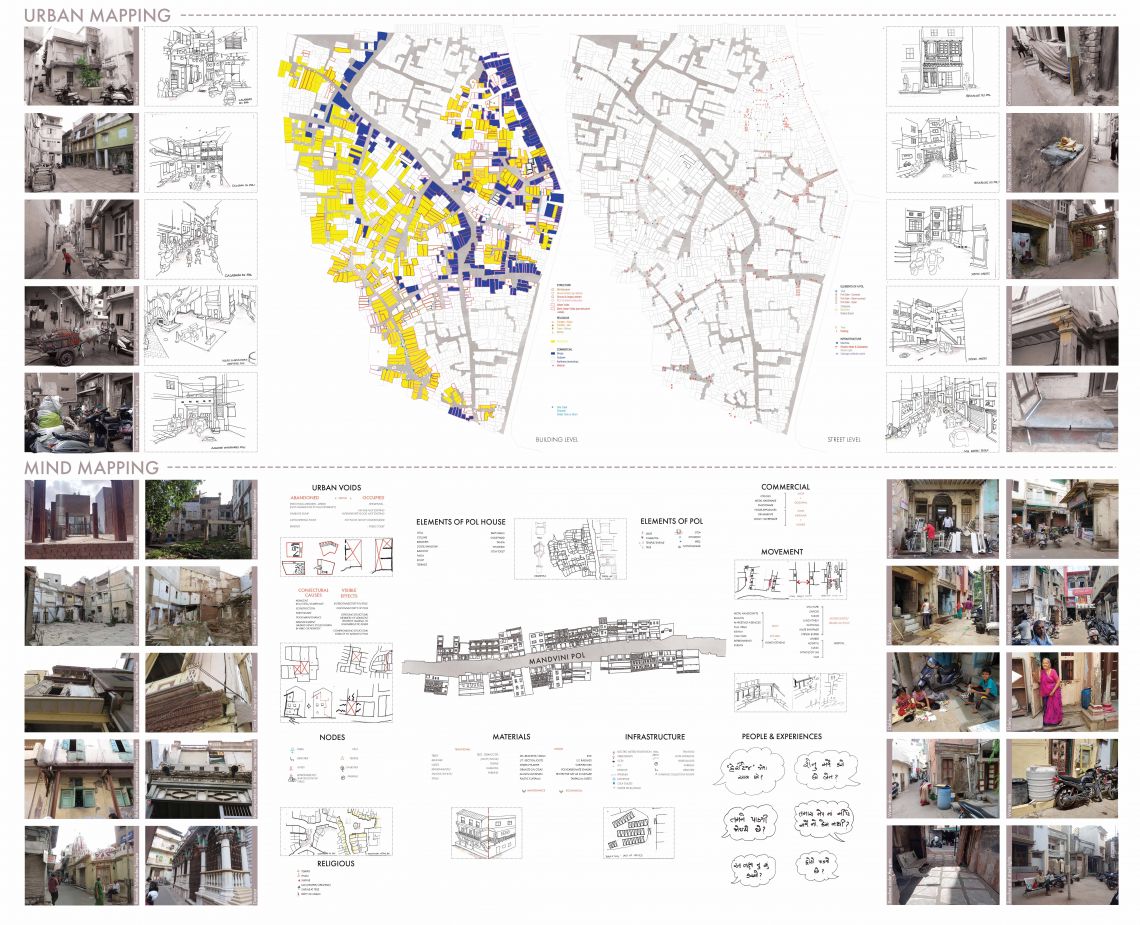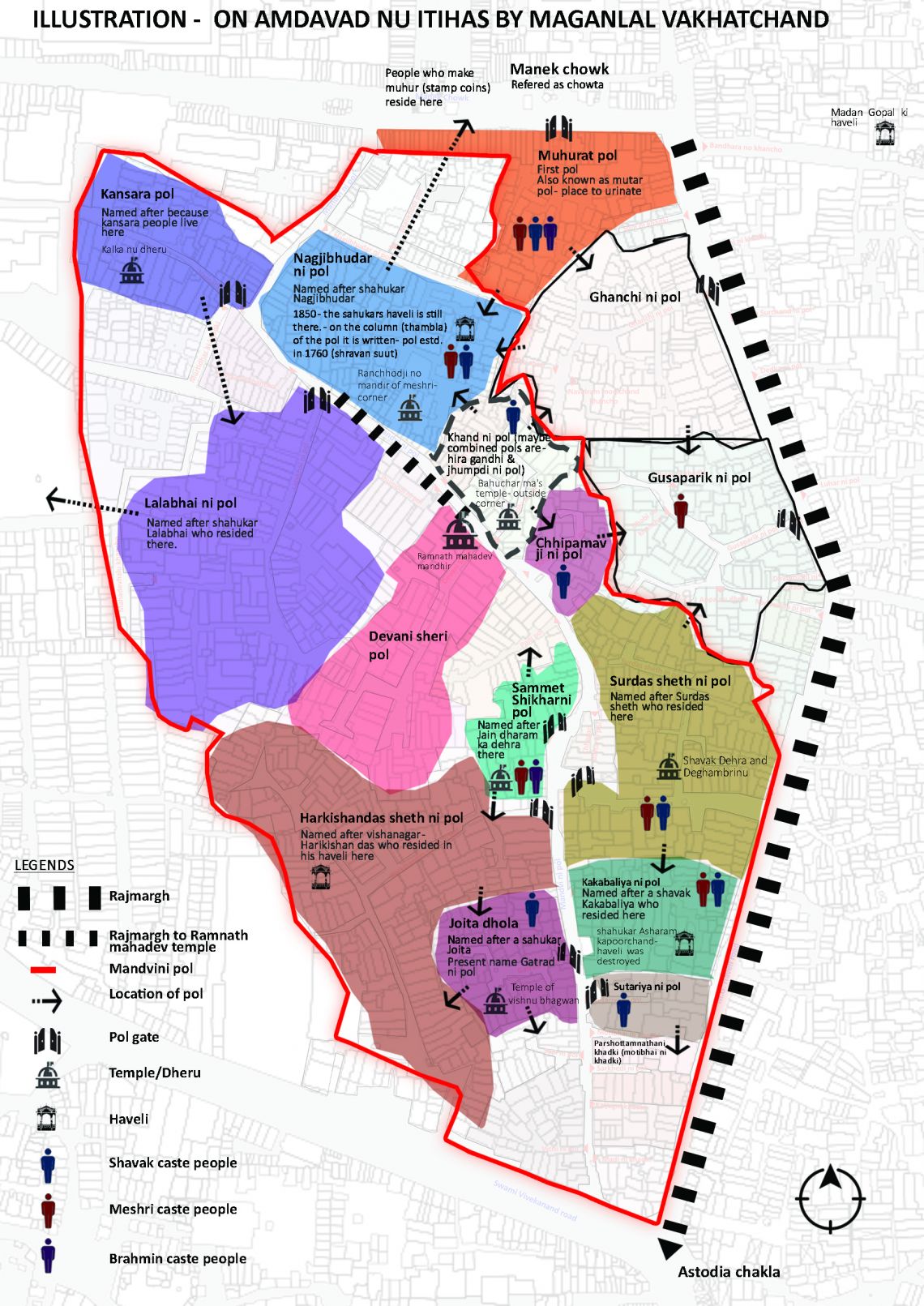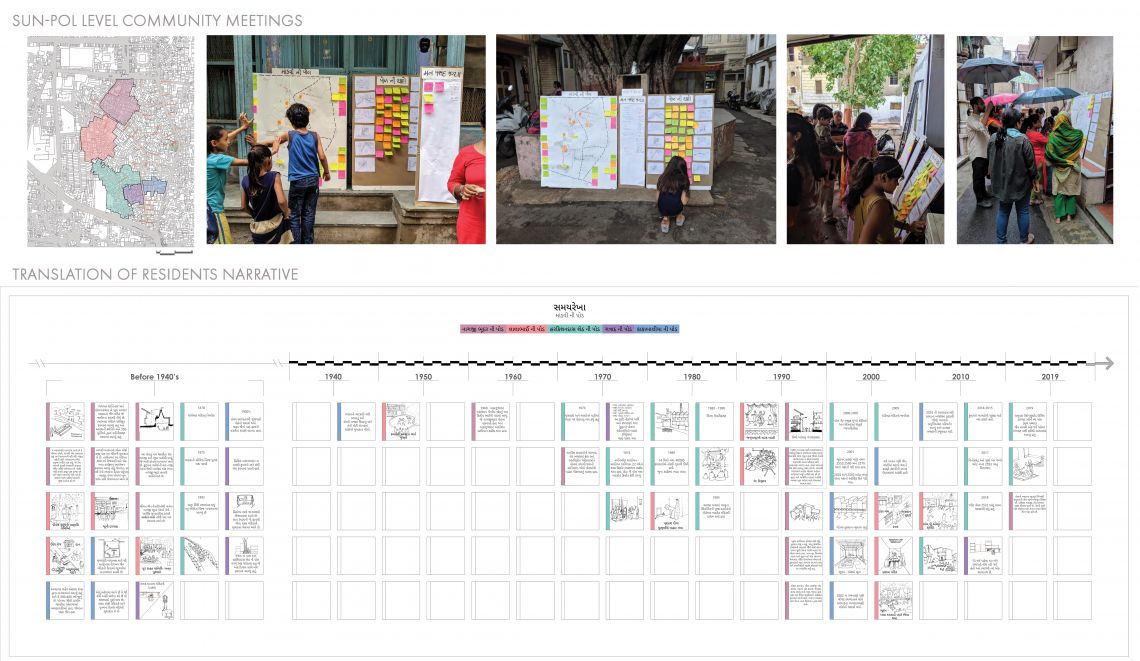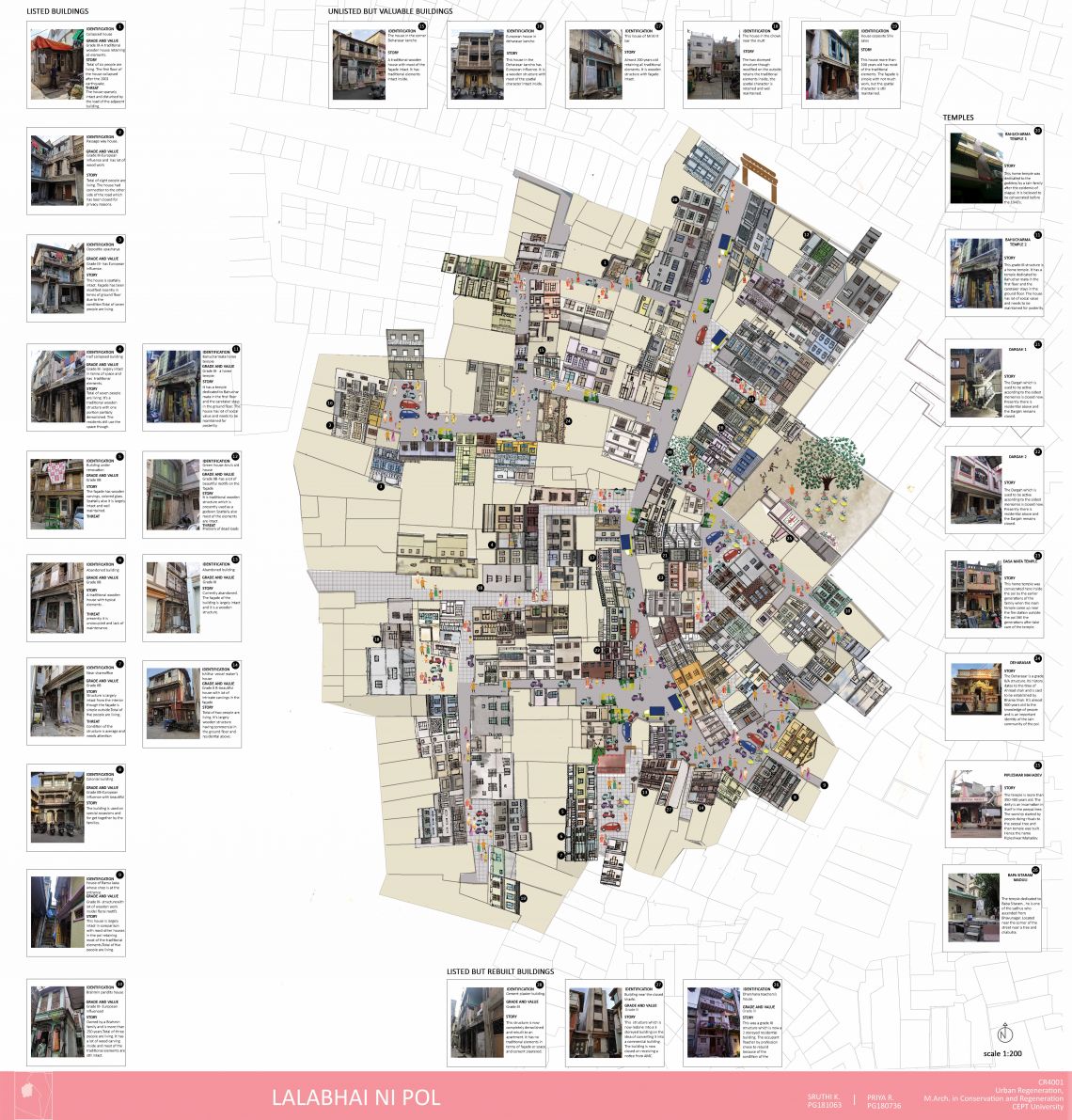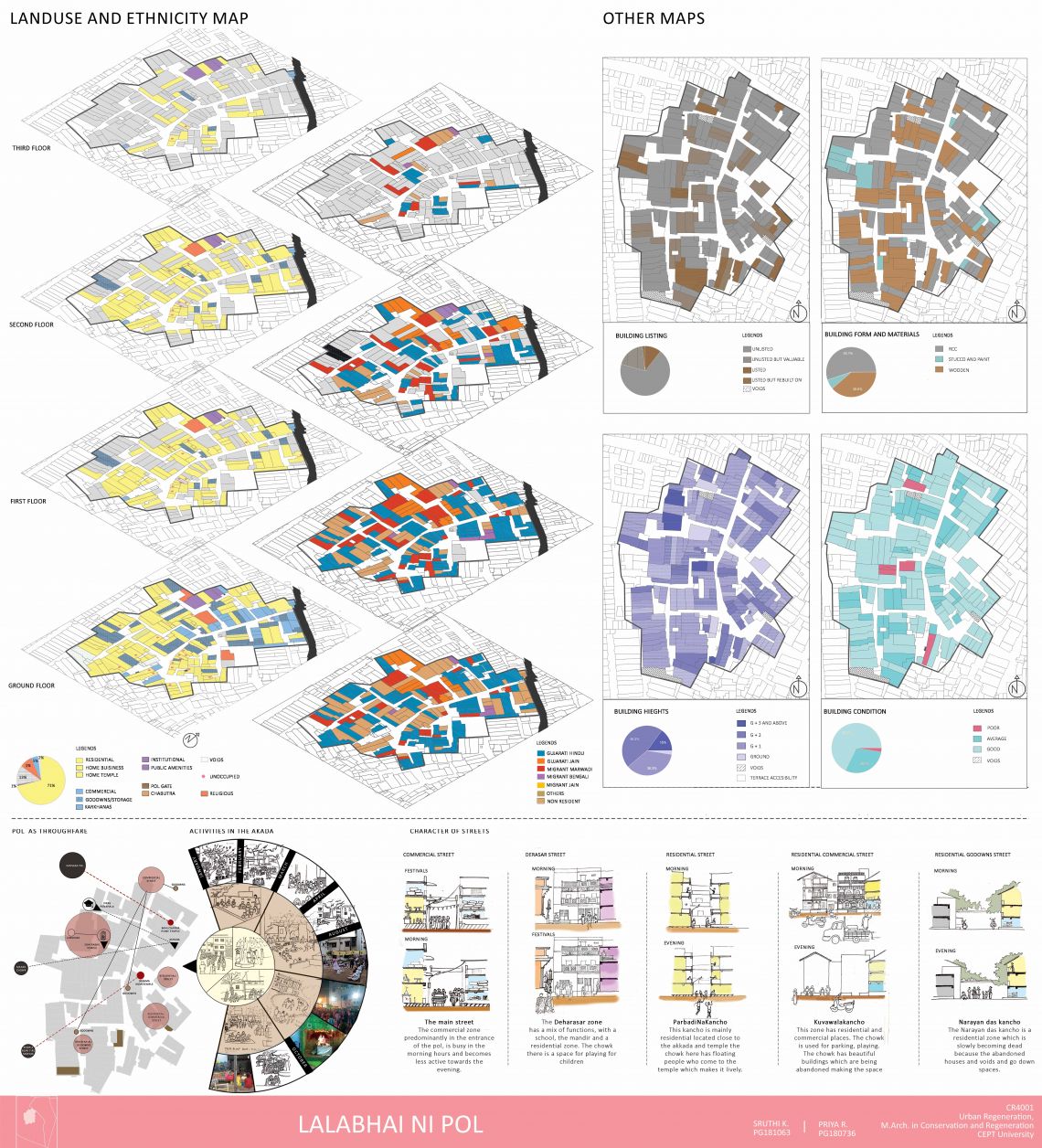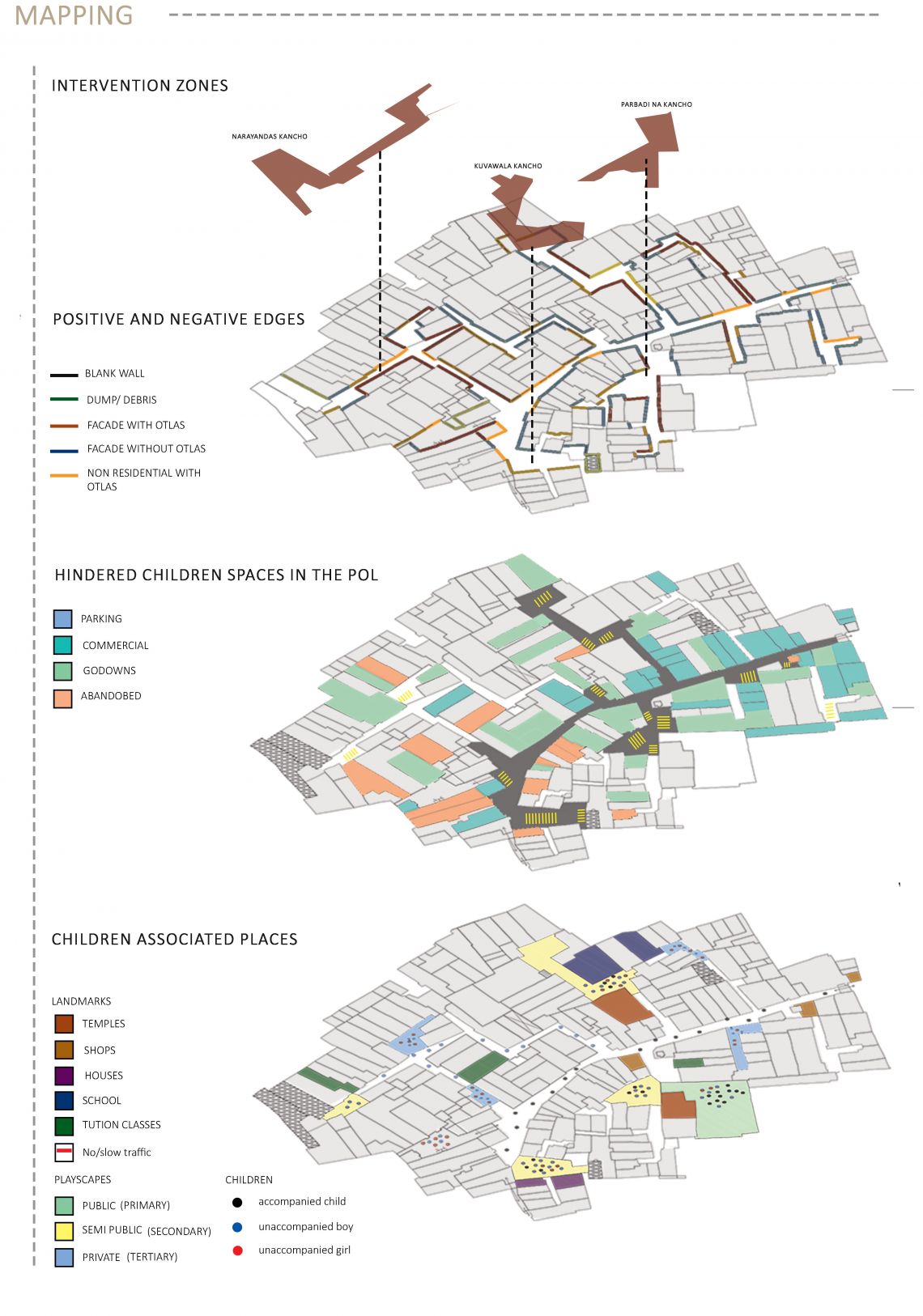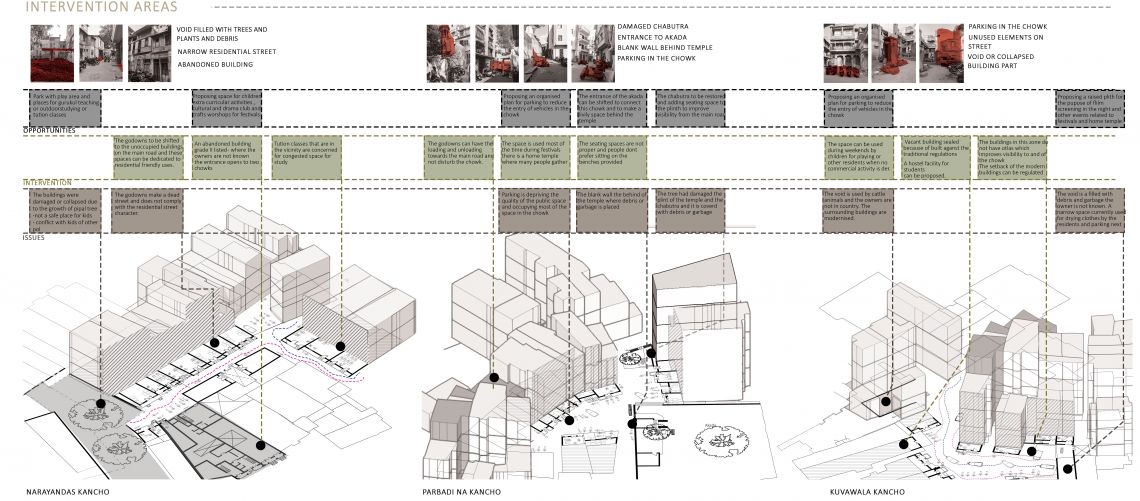Your browser is out-of-date!
For a richer surfing experience on our website, please update your browser. Update my browser now!
For a richer surfing experience on our website, please update your browser. Update my browser now!
SITE : Mandvi ni pol, Ahmedabad
APPROACH :
Community-led Regeneration The aim was to focus on ‘Situational’ and ‘Scholarly’ understanding. The process was initiated by understanding the sense of place and neighbourhood character by interpreting the layers of people’s history. This was achieved through pol wise community meetings and one on one discussions mapping every single dwelling. Every pol contrasted in its character in terms of social and spatial parameters. To be able to observe in detail these characteristics, it was decided to zoom in on a few sub-pols and study them in detail. Further prompted individual projects depending on understanding the potential and issues relating to the unique character of the pol. Following the individual focus was Intervention leading to urban regeneration
further interaction with residents of the pol
discussing proposals
PROJECT: Regeneration of neighbourhood through children friendly spacesLalabhai ni pol a functioning spot and a thoroughfare for all occasions celebrations where the Akhada is the most loved spot for all age groups all through the history. Religious exercises and sports events like cricket used to occur here. The pol has around 25 % of youngster’s populace yet it additionally has kids who originate from other pol for playing and for school. Based on my perceptions and association, the idea of play of youngsters differs from age, gender, and kind of game picked dependent on the typology of roads they possess. Subsequently ordering the roads and open spaces as primary, secondary and tertiary. Analysis begins with the general perceptions on understanding how the kids utilize the streets which was comprehended dependent on age, gender and type of games they play in the open spaces. For the policies and guidelines, the hierarchy of the street are considered to understand the context surrounding. Overall the aim was to get back the character of the lanes based on the recollections of the inhabitants which endeavours to bring back the traditional character of the setting alongside the contemporary needs of the dynamic open spaces.
